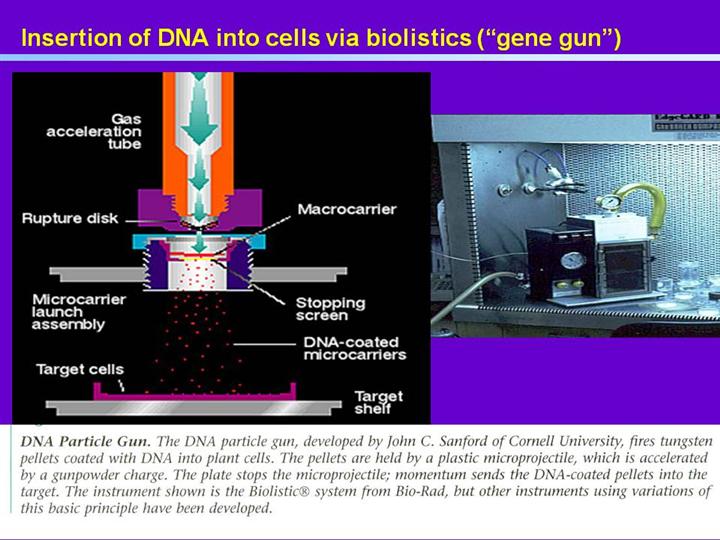| front |1 |2 |3 |4 |5 |6 |7 |8 |9 |10 |11 |12 |13 |14 |15 |16 |17 |18 |19 |20 |21 |22 |23 |24 |25 |26 |27 |28 |29 |30 |31 |32 |33 |34 |35 |36 |37 |38 |39 |40 |41 |42 |43 |44 |45 |46 |47 |48 |49 |50 |51 |52 |53 |54 |55 |56 |57 |58 |59 |review |
 |
Overcoming the Limited Range of A. Tumefaciens Infection Research efforts in the past few years have reduced the limitations of A. tumefaciens. Scientists discovered that by using the processes of microinjection, electroporation, and particle bombardment, naked DNA molecules can be introduced into plant cell types that are not susceptible to A. tumefaciens transfection. Microinjection involves the direct injection of material into a host cell using a finely drawn micropipette needle. Electroporation uses brief pulses of high voltage electricity to induce the formation of transient pores in the membrane of the host cell. Such pores appear to act as passageways through which the naked DNA can enter the host cell. Particle bombardment actually shoots DNA-coated microscopic pellets through a plant cell wall. These developments, important in the commercial application of plant genetic engineering, render the valuable food crops of corn, rice, and wheat susceptible to a variety of manipulations by the techniques of recombinant DNA and biotechnology.
|